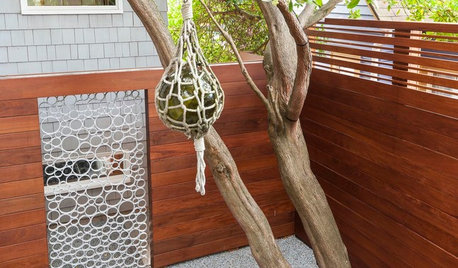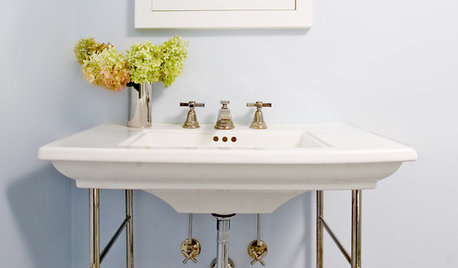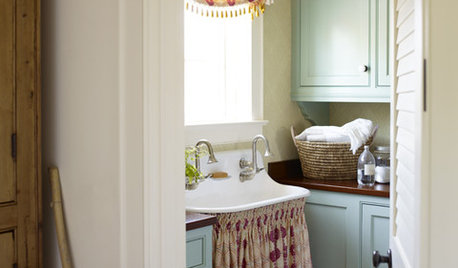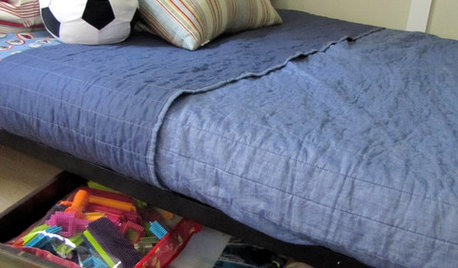Using pvc, abs, or other pipe in earthbox container...?
jasong31
15 years ago
Related Stories

FENCES AND GATESA Designer Uses PVC Pipe to Cast a Modern Garden Gate
Landscape designer Scot Eckley walks us through the process of creating a custom aluminum ring gate
Full Story
BATHROOM DESIGNSink Pipes Worth Seeing
Decorative Options Let You Get Creative With Those Fixtures Under the Sink
Full Story
BATHROOM SINKSVintage Style: When, Why and How to Use a Sink Skirt
There’s no skirting the issue: There are times when this retro look is just right
Full Story
GARDENING GUIDES8 Materials for Raised Garden Beds
Get the dirt on classic and new options for raised vegetable and plant beds, to get the most from your year-round garden
Full Story
GARDENING GUIDESHow to Install a Drip Irrigation System
Save time and water with a drip watering system in your vegetable garden — a little patience now will pay off later
Full Story
ORGANIZINGOutside the Box: 18 Unconventional Storage Solutions
You might never think to use household standards in creative ways like these, but you’ll be glad we did
Full Story
HOUZZ TVHouzz TV: How to Install a Rain Barrel
This DIY tutorial shows how easy it can be to capture rainwater from your roof to use in your garden later
Full Story
GARDENING GUIDES10 Solutions for Soggy Soil
If a too-wet garden is raining on your parade, try these water-loving plants and other ideas for handling all of that H2O
Full Story
GARDENING FOR BUTTERFLIES3 Ways Native Plants Make Gardening So Much Better
You probably know about the lower maintenance. But native plants' other benefits go far beyond a little less watering and weeding
Full Story
MATERIALSInsulation Basics: What to Know About Spray Foam
Learn what exactly spray foam is, the pros and cons of using it and why you shouldn’t mess around with installation
Full Story






lime_coke
rnewste
Related Professionals
Wareham Landscape Architects & Landscape Designers · Willowick Landscape Architects & Landscape Designers · Northport Landscape Contractors · Panama City Beach Landscape Contractors · Thonotosassa Landscape Contractors · Raytown Landscape Contractors · Alamo General Contractors · Davidson General Contractors · Mishawaka General Contractors · Parkersburg General Contractors · Summit General Contractors · Ankeny Decks, Patios & Outdoor Enclosures · Kernersville Decks, Patios & Outdoor Enclosures · Montgomery County Decks, Patios & Outdoor Enclosures · Orland Park Decks, Patios & Outdoor Enclosuresjasong31Original Author
lime_coke
bdobs
lime_coke
bingster
jasong31Original Author
rnewste
bootster
k2marsh
atascosa_tx
its_kristy
miesenbacher
dave1mn2
lime_coke
rnewste
rnewste
lime_coke
dave1mn2
miesenbacher
rnewste
lime_coke
momisd
shelbyguy